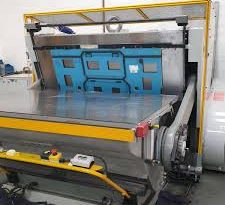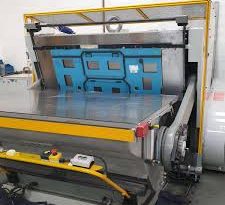Enhancing Design Flexibility and Innovation with Digital Die-Cutting Machines
The advent of digital die-cutting technology has brought about a paradigm shift in how industries approach design and production. Unlike traditional die-cutting, which relies on physical dies to shape materials, digital die-cutting uses high-precision lasers or blades guided by digital files. This article explores the transformative impact of digital die-cutting machines on design flexibility and innovation, highlighting their advantages in modern manufacturing environments.
Revolutionizing Product Design
Digital die-cutting machines enable designers to push the boundaries of creativity. With the ability to quickly transition from design concept to physical prototype, these machines facilitate rapid experimentation and iteration. Designers can explore complex shapes and intricate details without the constraints of traditional die manufacturing, significantly reducing the time and cost associated with product development.
Customization at Scale
One of the most significant benefits of digital die-cutting is the ease with which it allows for customization. Industries ranging from packaging to fashion have leveraged this capability to offer personalized products without the need for large production runs. This ability to customize on-demand aligns perfectly with consumer trends towards individualized products, opening new markets and opportunities for businesses.
Material Versatility
Digital die-cutting machines are not limited by material constraints, capable of processing a wide range of substrates from paper and cardboard to textiles and metals. This versatility ensures that industries can apply digital die-cutting technology across various applications, from bespoke invitations and stickers to custom apparel and automotive parts.
Enhancing Efficiency and Sustainability
Beyond design flexibility, digital die-cutting machines contribute to operational efficiency and sustainability. The precision of digital cutting reduces material waste, and the elimination of physical dies decreases storage needs and material consumption. Furthermore, the speed of digital die-cutting accelerates production cycles, allowing businesses to respond more quickly to market demands while minimizing their environmental footprint.
Navigating the Challenges
Despite its numerous advantages, the transition to digital die-cutting presents challenges, including the initial investment in technology and the need for skilled operators. However, the long-term benefits, particularly in terms of design innovation and production efficiency, make a compelling case for adoption.
Conclusion
Digital die-cutting machines have emerged as a critical tool in the arsenal of modern manufacturers, offering unprecedented design flexibility and innovation. By enabling rapid prototyping, customization, and efficient production across diverse materials, digital die-cutting not only meets the demands of today’s market but also paves the way for future advancements in manufacturing. As technology continues to evolve, the role of digital die-cutting in driving creative and sustainable manufacturing solutions will undoubtedly expand, further solidifying its importance in the industry.



